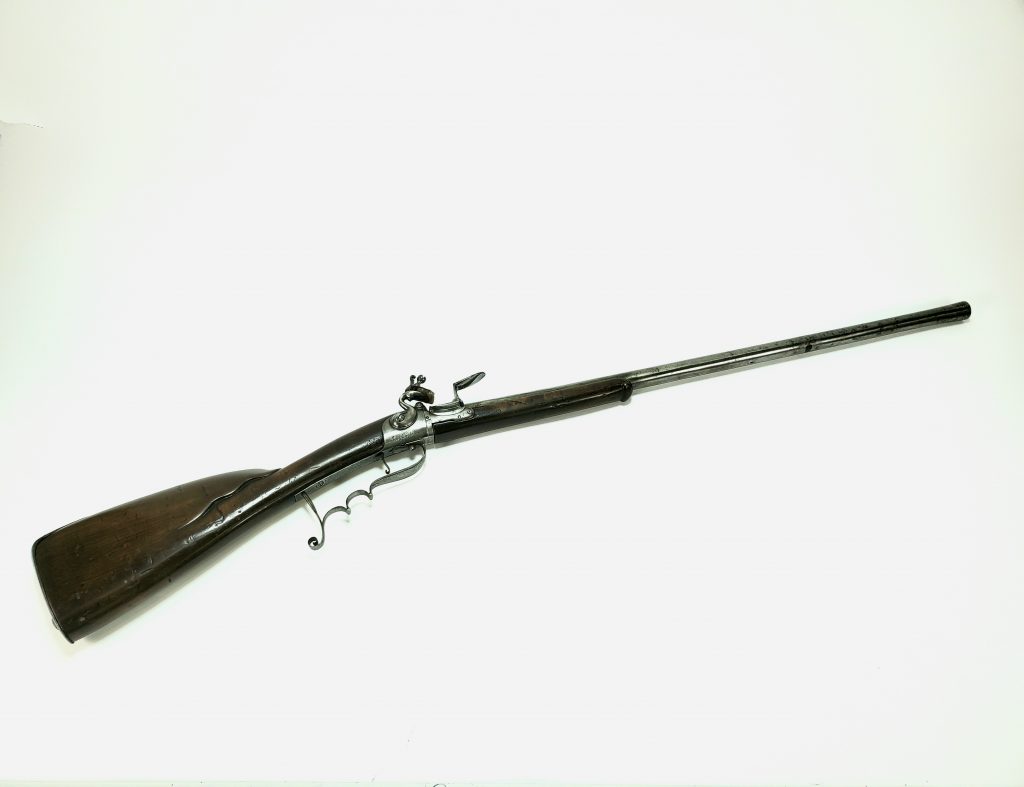While at an antique arms show over the weekend a friend brought me a very interesting mid-18th century gun. It was weird looking and had a high rounded comb on the butt, a wooden forend, and a top mounted hinge in the middle of the flintlock mechanism to load the gun at the breech, not at the muzzle. This is extremely uncommon for this time period. On the right side of the frame it was marked “John Cookson/Boston.” I couldn’t wait to get it home and do some research on this strange gun!

Once at the computer and my reference library, it didn’t take long to find out more about the maker. John Cookson was born in London, England in about 1673. He may have been the son of a London gunmaker of the same name and based upon a few guns that survive in England he was probably a gunmaker in London. At some point before or around 1700 he emigrated to America and settled in Boston. In 1701 he is listed as being a member of the Ancient and Honorable Artillery Company and from 1722 to 1726 he acted as their company clerk. In 1727 he was employed to clean and repair the arms that belonged to the Province of Massachusetts Bay. Cookson was also manufacturing arms on his own, including one called the “Cookson repeater” that used a mechanism that could load and fire nine times by turning a handle. A newspaper search of Boston newspapers of the period turned up an advertisement from 1756 for the sale of one of these repeaters “Made by John Cookson, and to be sold by him at his house in Boston: A hand Gun of 9 Pound and a half weight; having a place convenient to hold 9 Bullets, and Powder for Charges and 9 Primings; the said Gun will fire 9 Times distinctly, as quick, or as slow as you please.”
But back to our strange gun. It has an iron butt plate, maple stock, scalloped carved lines on the butt, an iron trigger guard with finger notches to shoot more comfortably and a button to open the breech of the gun and load, two lines formed along the top of the barrel to form a sight plain, and a “swamped,” or flared muzzle.
John Cookson died in 1762 and is buried at Copps Hill Burying Ground in Boston leaving us only a few of his early firearms in museums and private collections around the world. As it is such a rarity, I feel privileged to study it and be the caretaker of it before it goes to a new home in a few months.






